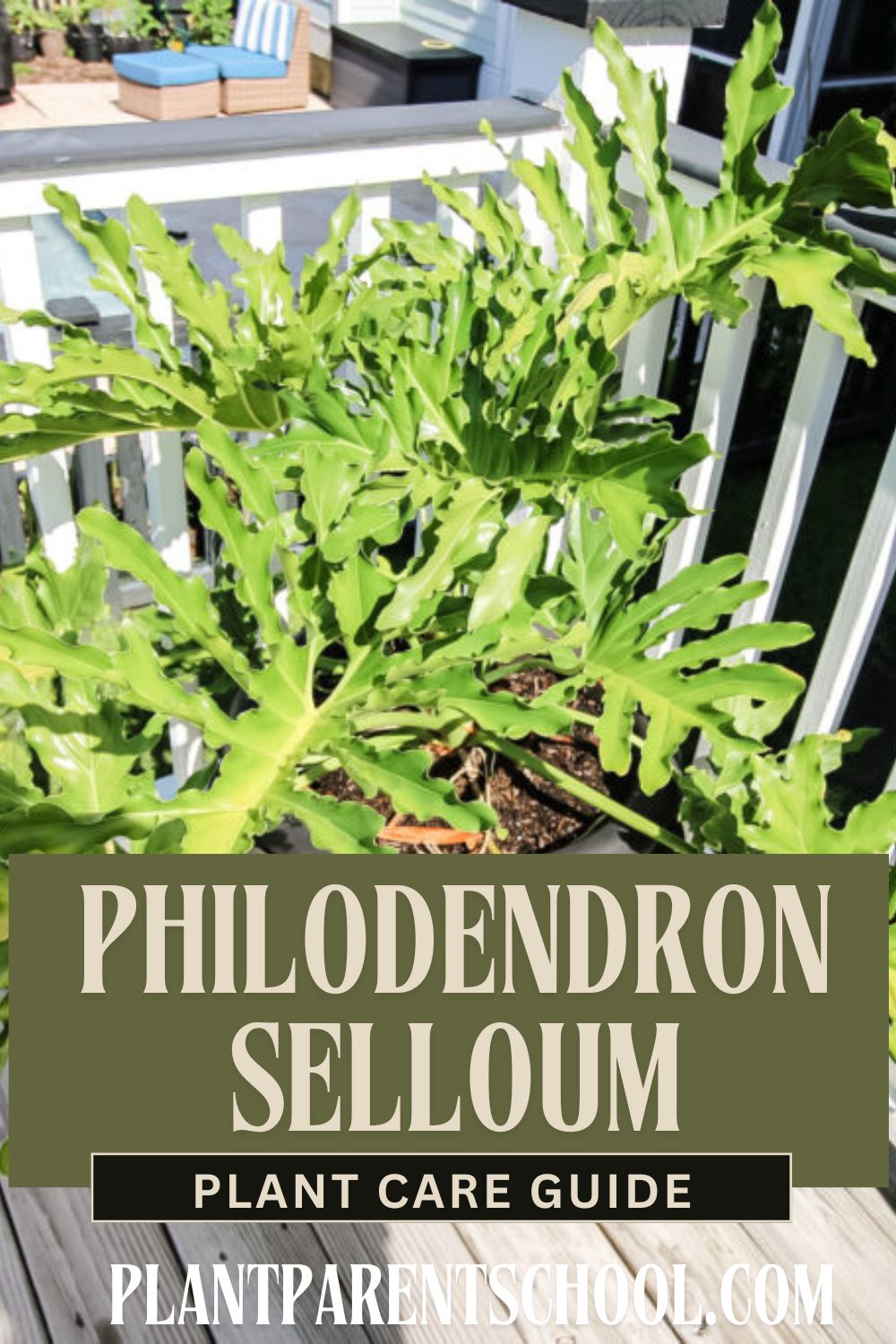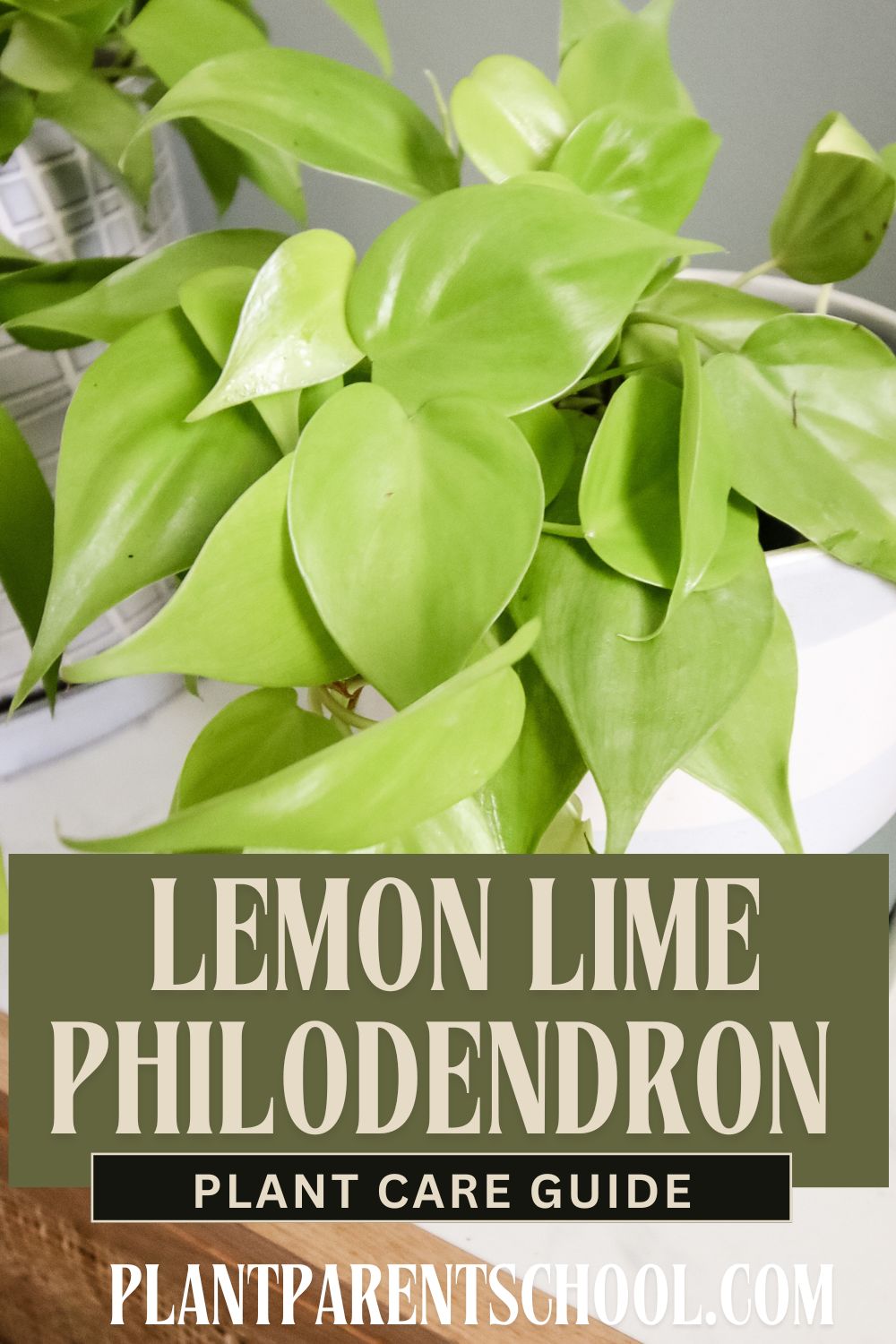Want to add a Pink Princess Philodendron to your houseplant collection? They are beautiful and easy to care for! Here's my complete Pink Princess Philodendron care guide!
Are you looking for a pink houseplant to add to your collection? Look no further than the Pink Princess Philodendron! Not only are they stunning, but they are also super easy to care for.
In this comprehensive guide, we'll walk you through everything you need to know to keep your Pink Princess Philodendron thriving and beautiful.
Quick Look
- 🌞 Lighting needs: Bright, indirect light
- 💧 Watering needs: Water when the top inch of soil is dry
- 📏 Mature Height: Up to 2-4 feet indoors
- 🌱 How to propagate: Stem cuttings
- 🚫 Toxic/non-toxic: Toxic to pets and humans
- 🌸 Flowering: No
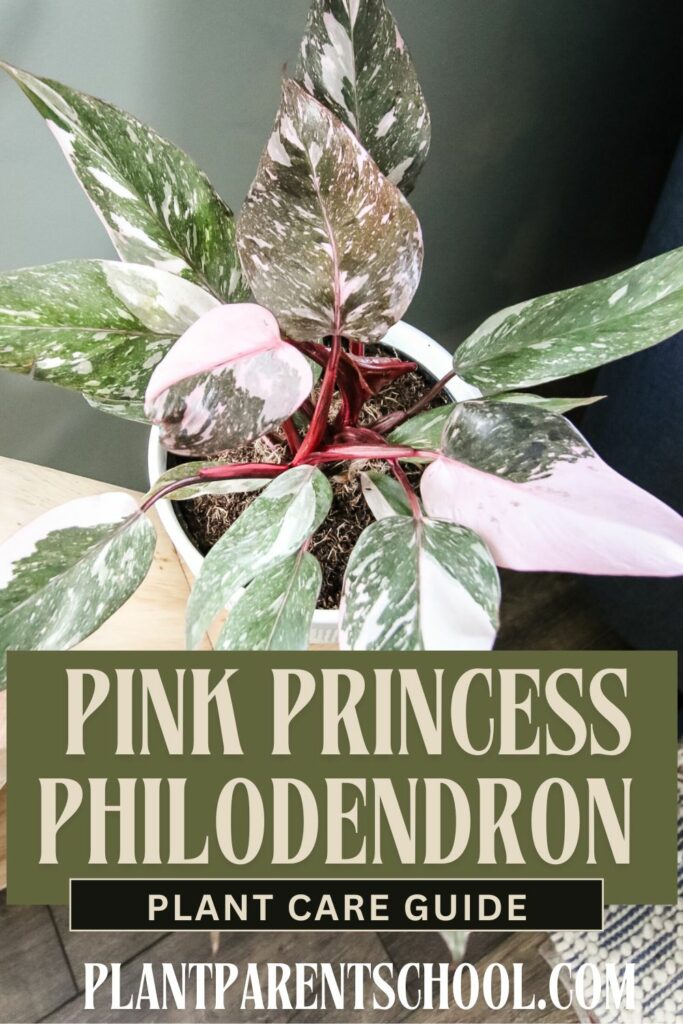
Pink Princess Philodendron Plant Care Guide
Pink Princess Philodendron, also known as Philodendron erubescens, is a striking and sought-after houseplant loved for its heart-shaped leaves with bright shades of pink, green, and black.
Its unique pink foliage makes it a favorite among plant enthusiasts, adding a pop of color to any room.
Lighting Needs 🌞
Pink Princess Philodendron thrives in bright, indirect light. Avoid exposing it to direct sunlight, as this can scorch its leaves.
Place your plant near a window with sheer curtains or in a spot where it receives filtered sunlight.
If natural light is limited, you can also consider using artificial grow lights to supplement its lighting needs.
Watering Needs 💧
Proper watering is crucial for the health of your Pink Princess Philodendron. Ensure your plant's pot has drainage holes.
Water when the top inch of soil feels dry to the touch. Avoid letting it sit in very wet soil, as this can lead to root rot.
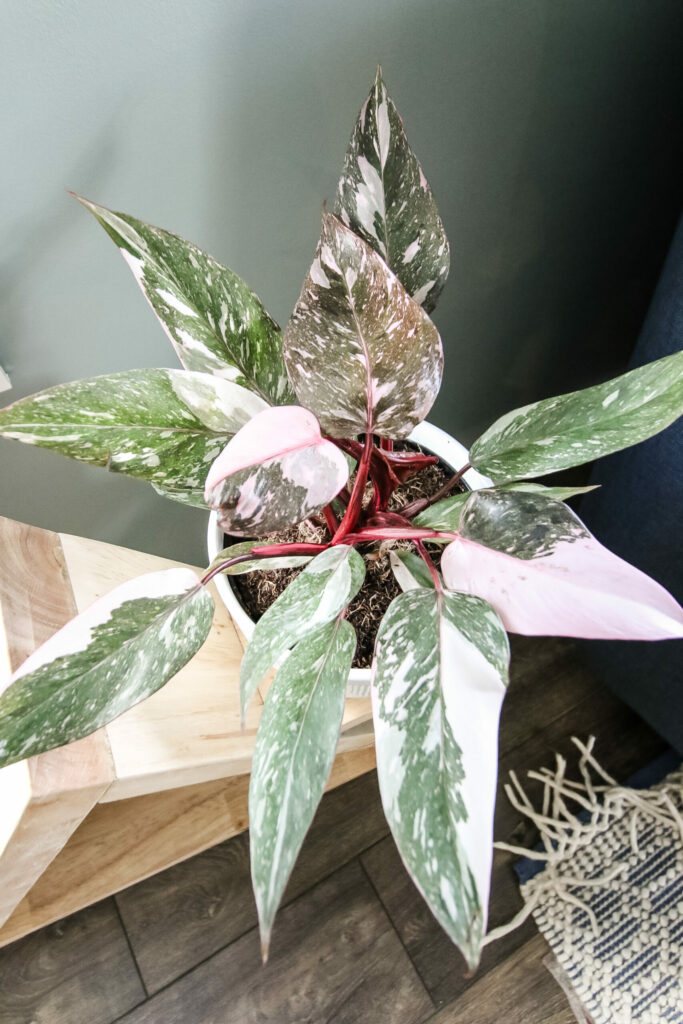
Mature Height 📏
Indoors, Pink Princess Philodendron can reach a height of 2-4 feet. Regular pruning helps manage its size and shape.
How to Propagate 🌱
Propagate your Pink Princess Philodendron through stem cuttings. Cut a section of the stem with at least one node and a few leaves. Place the cutting in water or moist soil, and roots will develop in a few weeks.
Toxicity 🚫
Yes, Pink Princess Philodendron is toxic to humans and pets if ingested. It contains calcium oxalate crystals, which can cause discomfort and irritation if consumed.
Place your Pink Princess Philodendron out of reach of children and pets.
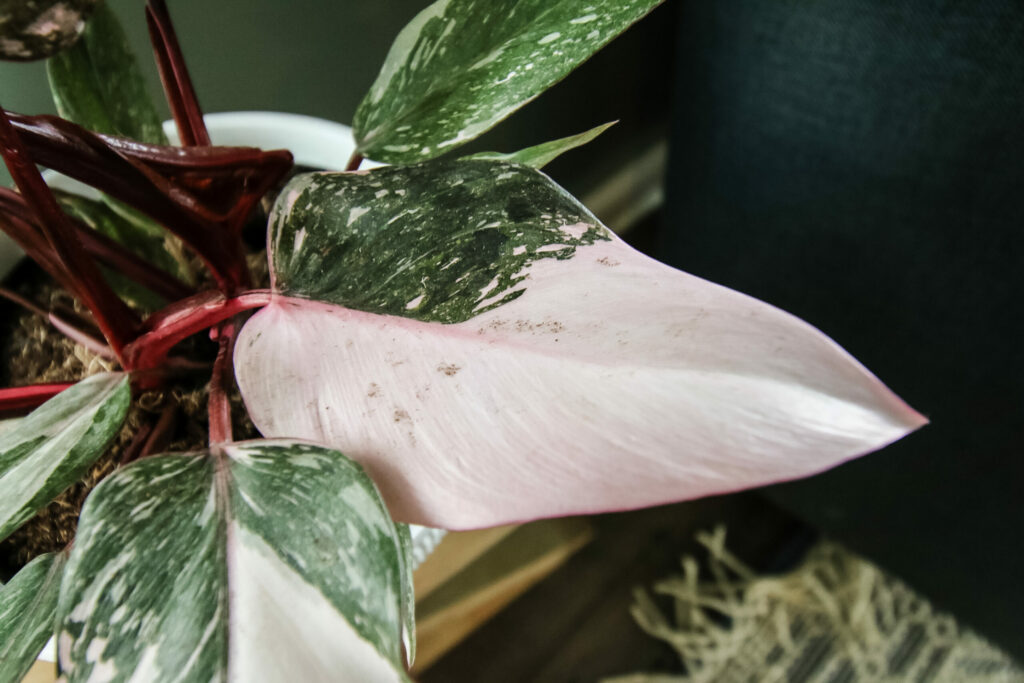
Flowering 🌸
Pink Princess Philodendron rarely flowers indoors. Its primary appeal lies in its stunning foliage rather than its blooms.
Humidity and Temperature
Pink Princess Philodendron thrives in high humidity environments, similar to its natural rainforest habitat. Aim for humidity levels of 60% or higher.
Room temperatures between 65-85°F (18-29°C) are ideal.
Consider using a humidifier or placing the plant on a pebble tray with water to maintain high humidity levels.
Soil and Repotting
Use a well-draining, lightweight potting mix that retains some moisture while allowing excess water to escape. A mix designed for tropical plants works well.
Repot your Pink Princess Philodendron every 1-2 years, typically in spring, to refresh the soil and provide space for root expansion.
Choose a pot with drainage holes to prevent water-logging.
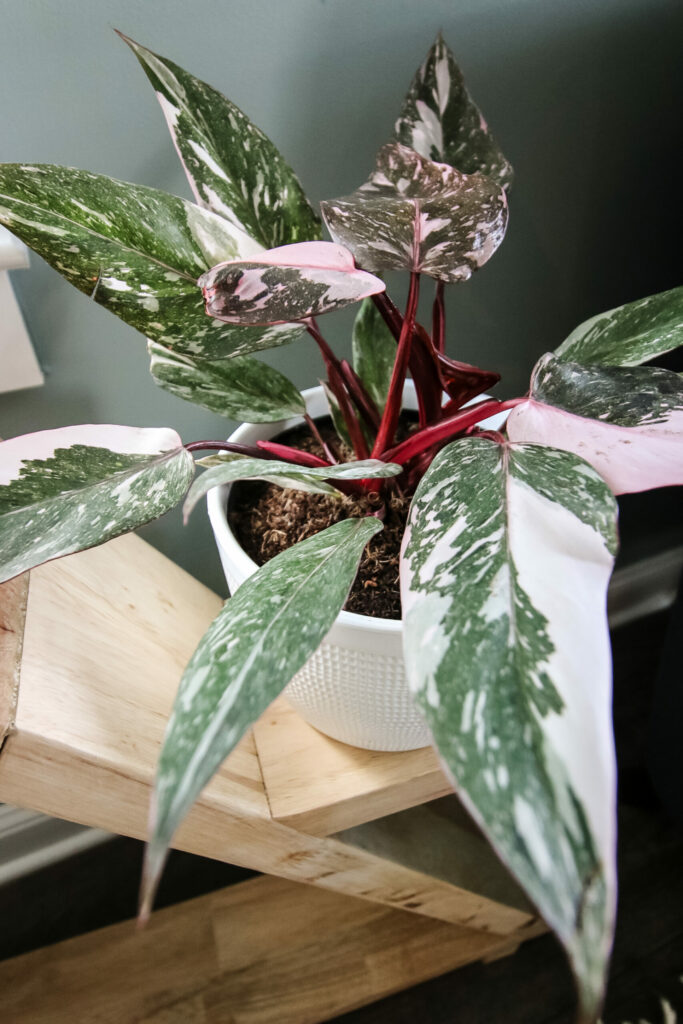
Fertilization
During the growing season (spring and summer), feed your Pink Princess Philodendron with a balanced liquid fertilizer every 4-6 weeks.
Dilute the fertilizer to half its recommended strength to prevent over-fertilization.
Avoid fertilizing during the winter months when the plant's growth slows down.

Common Problems and Solutions
- Yellow Leaves: This can indicate overwatering or underwatering. Ensure you're following proper watering guidelines. Check if your plant is receiving appropriate light. Inspect the roots for signs of root rot if necessary.
- Loss of Variegation: This can occur due to insufficient light. Move your plant to a brighter spot with indirect sunlight to help preserve its vibrant colors.
- Pests: Regularly inspect your plant for signs of pests, such as webs, discolored leaves, or sticky residue. Use neem oil or insecticidal soap for infestations.
- Brown Leaf Edges: This often indicates low humidity levels. Increase humidity by misting, using a humidifier, or placing the plant on a pebble tray.
- Wilting: Wilting can be a sign of both overwatering and underwatering. Check soil moisture and adjust your watering routine if needed.
With these care tips, your Pink Princess Philodendron will thrive and become a stunning showcase in your home, bringing pink color and tropical flair to any room!
Want to Build Your Plant Care Confidence?
If you're ready to take your plant parenting to the next level, join Plant Parent School! This self-paced course will teach you everything you need to know about watering, lighting, troubleshooting, and more—so you can enjoy thriving houseplants with ease. Click here to enroll today!



